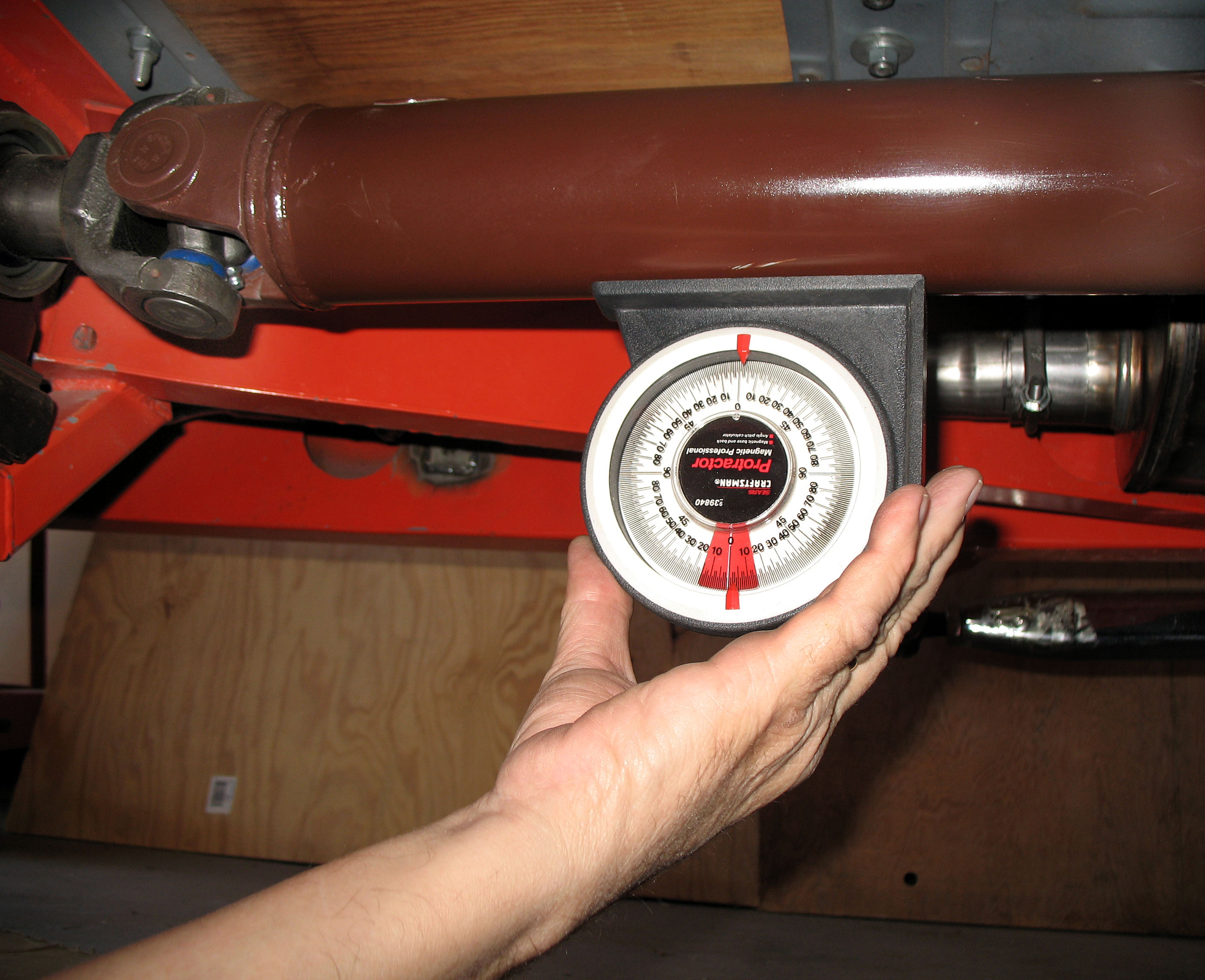
 |
|
|
|
|
||||||||||||||||||||||||||||||||||||||||||||||||||||
|
|
|
To cancel this excitation torque, the U-joint at the other end of the shaft needs to rotate at an equal but opposite angle in relation to the U-joint up front. By using U-joints in pairs and in phase, and the angle between the driveshaft and the equipment at both ends is the same, the acceleration/deceleration cycles tend to cancel each other. These U-joint angles should always be at least 1-degree to avoid wearing out the yoke bearings. How: When you build a chassis and position the driveline components, you need to orient them so that the angle of a line drawn through the center of the transmission exiting through the output shaft (A) and a line drawn through the center of the driveshaft (B) is equal to but opposite the angle of a line drawn through the pinion shaft in the rear differential(C) and the line drawn through the center of the driveshaft (B). The accompanying drawing illustrates how the lines drawn through the transmission and pinion shafts (A&C) are parallel to each other, though not in the same plane. |
 |
||||||||||||||||||
|
This drawing illustrates the relationship that needs to be established between the three main driveline components. |
||||||||||||||||||
|
U-joint operating angles are generally the most common cause of driveline vibration in vehicles that have been reworked. When reworking a chassis or installing a new driveshaft in a vehicle there are basic rules that apply to U-joint operating angles that you should follow. |
||||||||||||||||||
 |
||||||||||||||||||
|
Next step is to measure the rear end pinion shaft angle. It should be pointing upward towards the front with the vehicle sitting at ride height on a level surface. At least 1-degree and ideally not more than 3-degrees up. You can alter the rear end pinion shaft angle by inserting or removing wedge shaped shims under the rear spring mounts or by adjusting the length of the control arms positioning the rear end. See photo below. |
||||||||||||||||||
 |
||||||||||||||||||
|
Finally measure the driveshaft angle to confirm that it is at least 1-degree down from the transmission output shaft angle and at least 1-degree up from the rear end pinion shaft angle. Achieving these angles in relation to each other will cancel out the vibration. |
||||||||||||||||||
 |
||||||||||||||||||
|
Checking to see if you have got it correct: If the vibration steadily increases with driveshaft speed (either accelerating or decelerating) the symptom is primarily the result of a driveshaft imbalance or yoke runout. Sometimes this yoke runout problem can be improved by rotating the U-joint 180-degrees in the rear end differential yoke. Driveshaft-related vibrations usually occur at roughly engine speed in high gear. Wheel/axle vibrations usually occur at 1/3 rd engine speed or driveshaft speed because of the differential gearing. To determining whether it is the output of the transmission or the pinion in the differential, change gears when the noise occurs and maintain speed. If the vibration/noise changes in frequency, the source is in the transmission or engine. If the frequency remains the same it is a driveline problem. |
||||||||||||||||||